11 Types of Ferns, Indoor & Outdoor, to Liven Up Your Space
Author: Jen Worst | Editor: Omar Alonso
Review & Research: Jen Worst & Chris Miller

While there's countless more types of ferns, we'll introduce you to the 11 most common, available, or exciting ones so you can creatively decorate your patio, flowerbeds, and lawns while enjoying the love that arises out of gardening.
A fern is an example of primitive plants, but the presence of vascular tissue in ferns makes them different. For having two individual living stages, ferns are unique.
By definition, a nonflowering plant that completes its reproduction by producing spores is known as a fern. Ferns belong to the Plantae Kingdom and Aspleniaceae Family.
Like flowering plants, a fern has a stem, leaves, and roots. The leaves of a fern are referred to as fronds. Fronds with circinate vernation can be simple or compound based on how their lamina is divided.
In ferns, the sporophyte phase is dominant, so their roots are adventitious. They complete their reproduction sexually or asexually with the help of spores. When it comes to their habitat, ferns prefer to grow in humid and tropical regions.
Now that you're clear about what a fern is let's look at the different types of ferns.
Types of Ferns Around the World
It's estimated that 12,000 different types of ferns exist in the world. Ferns are among the oldest plants on Earth. We've found fossils from the middle Devonian era around 383-393 million years ago. Many types of ferns survive up to even a hundred years. This range may sometimes vary as some species are being added, while others are poorly studied.
Ferns have a lot to offer and are easy to care for, so many people buy them. Depending on the conditions they grow in, ferns are divided into indoor ferns and outdoor ferns. That's how we've broken it apart below.
Indoor Types of Ferns
Indoor ferns require ample moisture and humidity for their growth. These houseplants are perfect for decorating your room, bathroom, and kitchen.
You need to water them regularly and keep them away from direct sunlight. Here are some of the most amazing types of indoor ferns for natural decor.
Boston Fern (Nephrolepis exaltata)
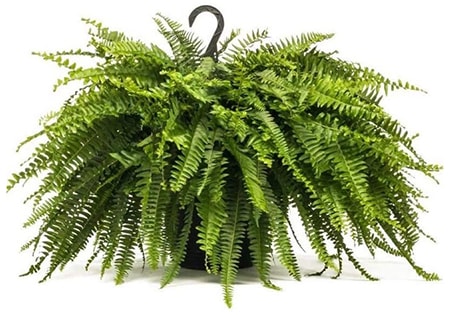
The Boston fern is also known as sword fern. Generally, it is found in the humid forests of Florida, South America, Mexico, etc. These perennial plants are 40-90 centimeters in height. They are sensitive to toxic chemicals, smokes, and draughts.
This houseplant requires a high level of humidity, moderate temperature, and humus-rich soil for its propagation. The Boston fern has earned an excellent reputation as air-purifying houseplants.
So, this indoor houseplant not only helps you to decorate your house but also promotes environmental cleanliness. It's a win/win for everybody.
Crocodile Fern (Microsorum musifolium)
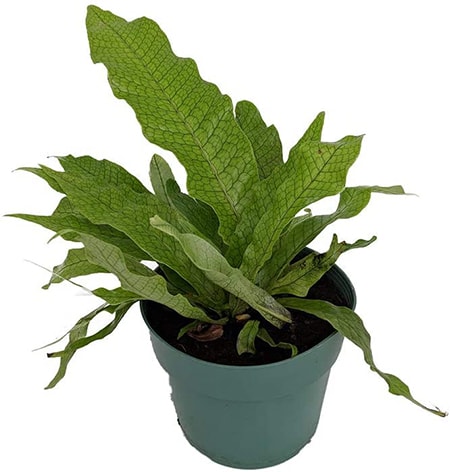
The Crocodile fern is compared with crocodile hides for their astonishingly similar appearances. It is mostly found in Australia and can be grown both indoor and outdoor. This tropical fern grows at the height of 2 to 5 feet long.
Warm temperatures and a pH within the range of 6 to 8.5 are essential for the Crocodile fern. Since it's an indoor plant, it scorches easily in direct sunlight.
These ferns love moisture, so a bathroom is the best place for them. They're most vulnerable to certain diseases like fern scale, but they're easily treated.
Staghorn Fern (Platycerium spp.)
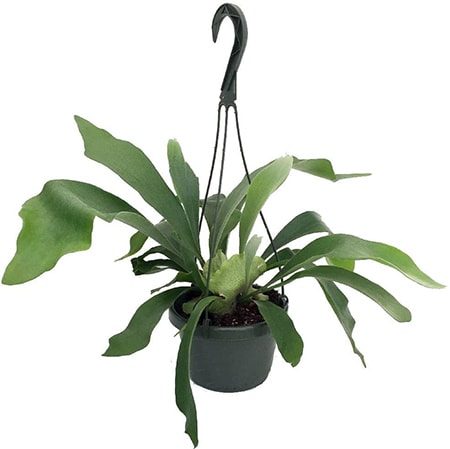
Staghorn ferns grow indoors and outdoors both. Wherever they grow, they need moderate moisture with humus-rich soil for their propagation. Like many ferns, these ferns are also found mostly in Australia.
This epiphytic plant has two kinds of leaves, and one of the leaves acts as the horns of giant herbivores, hence the name "Staghorn" fern. These ferns require low, indirect light along with moderate watering.
They thrive in high humidity, so their fronds are leathery, which is suitable for collecting moisture. The frond tips of the Staghorn fern produce cinnamon-colored spores. Since they have a life span of up to 90 years, you can pass it to your kids.
Kangaroo Paw Fern (Microsorium diversifolium)
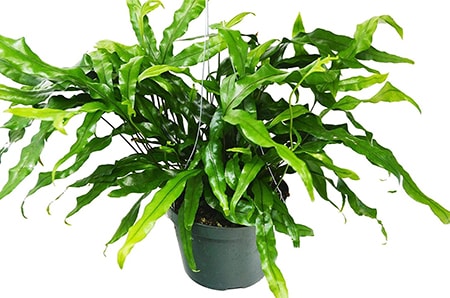
Unsurprisingly, the Kangaroo Paw fern is native of Australia. When it comes to its fronds, they come in a variety of shapes, sizes, and textures, but they all have the same deep green shade.
You can grow these epiphytes in the soil as well. However, the soil must be moist (not soggy) and well-drained.
The Kangaroo Paw fern has loved places with hot temperatures and high humidity, such as a bathroom. If they're in your living room, you can mist them daily or use a pebble tray.
Like most indoor plants, the Kangaroo Paw fern can't handle direct sunlight and needs partial shade. So please take care where you place them so you and they can be happy.
Japanese Holly Fern (Cyrtomium falcatum)
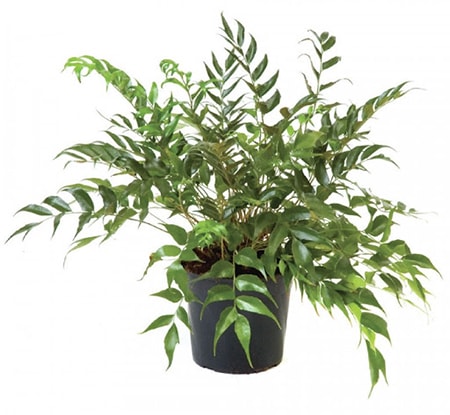
The Japanese Holly fern is a robust and perennial plant and unlike all ferns that we have shown you so far. Despite being tough, with its brightly colored green leaves, the Holly fern adds immense beauty to any room.
These ferns thrive in room temperatures; however, they can survive cold and hot temperatures if you fulfill their needs. They need filtered bright light for ideal growth, but they can withstand poor light for a short time period.
These plants need a moderately fertile, humus-rich soil, which should also be moist but well-drained soil. The Japanese Holly ferns are easy to maintain; you only need to water them every 7 to 10 days. Since they require low humidity, you shouldn't water them when it rains.
Lady Fern (Athyrium filix-femina)
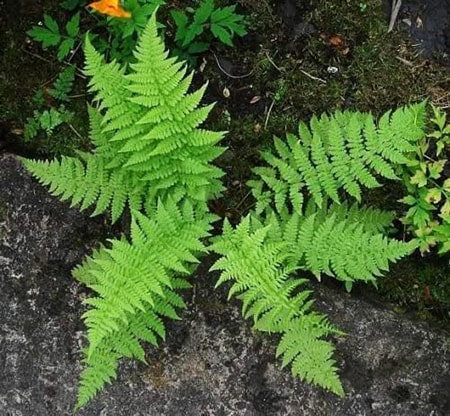
The Lady fern is an upright, perennial fern that can hit a height of 2 to 5 feet. The fronds of this beautiful fern are bright green with a finely textured lacy appearance. Lady fern is a colorful plant that produces frond stalks that are green, purple, or red.
Even though Lady ferns are part to full shade lovers, they can tolerate full sun with enough moisture. These deciduous ferns grow well in loamy soil that is well-watered but also well-drained.
Outdoor Types of Ferns
Outdoor ferns are cultivated outside the house, such as in garden premises. Compared to indoor ferns, they require less attention to proper development.
However, regular watering is essential for them. If you let them begin to decay you'll have to get rid of fungus gnats and spider mites, too.
Although there are plenty of high outdoor ferns out there, we have chosen some of the best types of outdoor ferns for your enjoyment.
Maidenhair Fern (Adiantum spp.)
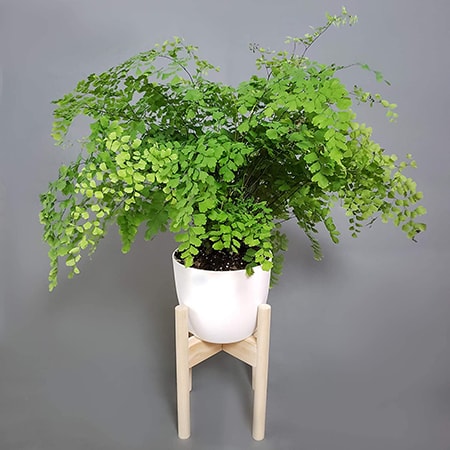
The Maidenhair ferns are diminutive plants with black stems that are easily broken. There are several varieties of the Maidenhair fern, but all of them have lots of small leaflets on their compound leaves.
These delicate looking ferns are available in varying shades of green. Their requirements are simple: moist soil with lots of organic matter, high humidity, and constant shade.
The American Maidenhair ferns grow up to 16 inches in height. They require moist conditions for survival. Also, they work well in containers or as ground covers both.
In contrast, the Northern Maidenhair fern grows up to 30 inches. They have beautiful deep purple-black stems.
Lastly, the Southern Maidenhair fern is an evergreen plant that requires high but indirect heat. Because of that, they also need a consistently moist but well-drained soil. They are all excellent choices as outdoor types of ferns.
Asparagus Fern (Asparagus aethiopicus)
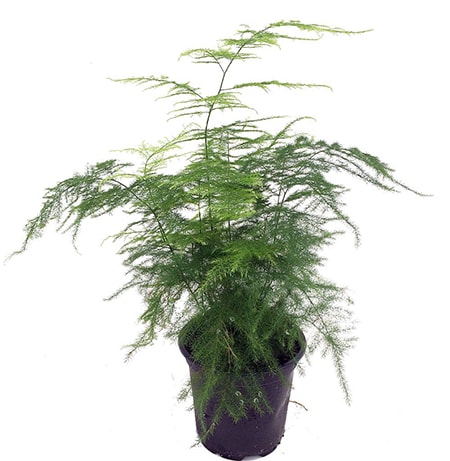
The Asparagus fern grows abundantly in the Northern Provinces of South Africa. It's perfect for decorating your garden; they're especially eye-catching when they're potted in hanging baskets. Merge them into your apartment garden ideas to take advantage of your space.
This fuzzy-looking fern can be short or long in growth. This plant produces attractive, small red berries that enhance the beauty of your garden.
That being said, the Asparagus fern features small spines that may irritate your skin. Therefore, you need to be careful while looking after them.
These ferns require ample light and warm weather for proper development. It can do well with part sun, but it fails to survive during winter.
Osmunda Ferns (Osmunda regalis)
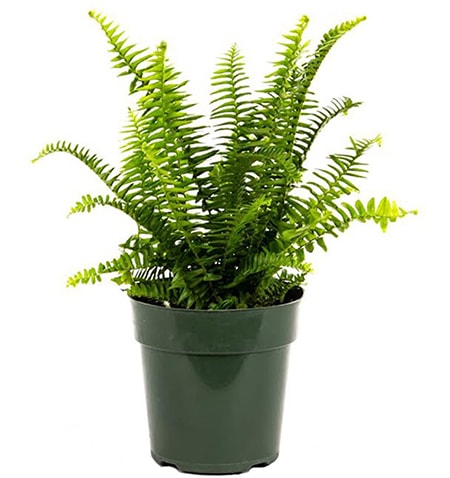
Native to the United States, the Osmunda ferns are ferns that thrive in swampy conditions. These ferns love fertile soil and shade for active propagation. With the progression of the season, the green color of fertile leaves turns brown.
To fill up the swampy corner of your garden, the Osmunda fern would be the best choice. What's more, they come in many varieties that look significantly different from each other.
So you have a lot of options with Osmunda ferns. The most popular Osmunda ferns are the Interrupted fern (Osmunda claytoniana) and Cinnamom fern (Osmunda cinnamomea).
Ostrich Fern (Matteuccia struthiopteris)
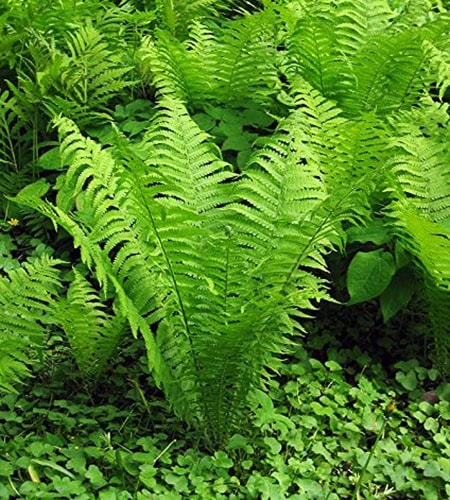
Being one of the tallest ferns types out there, the Ostrich fern can reach up to 1.5 meters in height. With leaves that resemble the tail of an ostrich, these ferns are also one of the prettiest.
The Ostrich fern prefers temperate regions, moist soil, and optimum sunlight for healthy growth. Too much direct sunlight may cause leaf burn.
Being a huge plant, this perennial fern needs plenty of space for proper growth. Also, their immature fronds are widely used as cooking vegetables.
Autumn Fern (Dryopteris erythrosora)
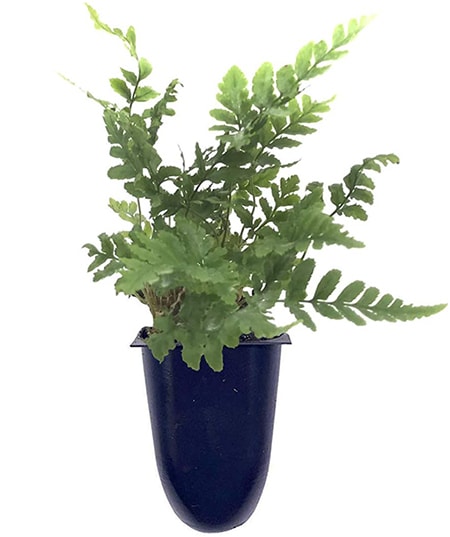
At maturity, the autumn fern grows to be around 18 inches tall. It grows at a medium pace and can be expected to live for about 15 years under optimal conditions.
This plant performs well in both part sunlight and complete shade. It is particularly specific with its soil quality, having a clear preference for warm and acidic soils.
What sets the autumn fern apart from the rest of the greenery in our list is its uniquely colored foliage. It gives you so many colors to enjoy throughout the year. Its copper-red foliage turns gold and green with time, and during fall, their color turns to rust.
Many Types of Ferns Plants for Your Tastes
Ferns are amazing. It's always lovely to read about these unique fern varieties. If you're planning to buy several species of ferns, consider the options mentioned above; we assure you that it will be a worthwhile investment.
Whether you're planting a fern in a greenhouse or a bowl, be impressed by its elegance and hardiness.
That being said, we recommend you properly study the types of ferns and their needs before making a purchase. This is important to make sure that you can take care of them properly, and they won't die in your care.



